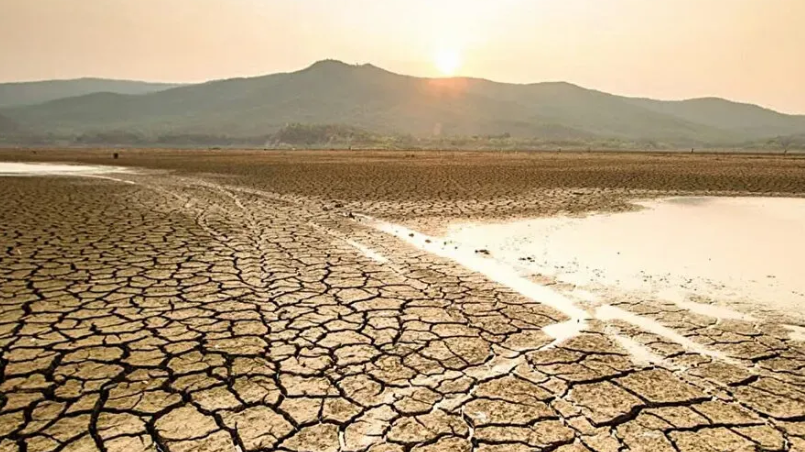2023: The Driest Year for Global Rivers in 33 Years (GS Paper 3, Environment)

Context
- The World Meteorological Organization (WMO) recently released its third edition of the State of Global Water Resources Report, revealing that 2023 marked the driest year for global rivers in over three decades.
- This report is crucial as it sheds light on the intensifying global water crisis, indicating severe stress on water supplies and raising alarms about future availability.
Understanding the Global Water Crisis
Key Findings from the WMO Report
- Declining Water Availability: The report highlights that global water resources have faced significant stress over the past five years, with river flows and reservoir inflows consistently below normal levels.
- Glacier Mass Loss: 2023 saw the largest mass loss of glaciers in the last 50 years. This loss is alarming not only for local ecosystems but also for communities that rely on glacier-fed rivers for their water supply.
- Access to Water: Approximately 3.6 billion people lack reliable access to clean water for at least one month each year. Projections suggest this number could escalate to 5 billion by 2050 if current trends continue.
- Urgency for Action: The report emphasizes the need for improved monitoring, management, and international cooperation regarding water resources to meet Sustainable Development Goal 6, which aims to ensure availability and sustainable management of water and sanitation for all.
Factors Contributing to the Driest Year for Global Rivers
Prolonged Droughts
- Impact on Major River Basins: Prolonged droughts have significantly affected major river systems worldwide. In North America, the Mississippi River experienced record low levels, while the Amazon River basin faced unprecedented challenges, impacting ecosystems and economies reliant on these water sources.
- Global Trends: In Asia, the Ganges, Brahmaputra, and Mekong river basins are similarly experiencing reduced water availability, highlighting a pervasive issue across multiple continents.
Record Heat
- Temperature Increase: The year 2023 has been recorded as the hottest year globally, with temperatures 1.45 °C above pre-industrial levels. This extreme heat has profound implications for water availability.
- Evaporation Rates: Elevated temperatures contribute to increased evaporation from rivers and reservoirs, further diminishing available water supplies and worsening the impacts of drought.
Climate Patterns
- El Niño and La Niña: The transition from La Niña to El Niño conditions plays a significant role in weather variability. El Niño often leads to unusual weather patterns, such as increased precipitation in some areas and intensified droughts in others.
- Indian Ocean Dipole (IOD): The positive phase of the IOD has also contributed to extreme weather conditions, leading to unpredictable rainfall patterns and further complicating water resource management.
Reservoir Inflows and Storage
- Decreased Inflows: Inflows into reservoirs followed the trend of global river discharge, with significant drops observed in India, North America, Central America, South America, and parts of Australia. This decline poses challenges for agriculture, drinking water supply, and hydropower generation.
- Regional Variability: For instance, reservoirs along the west coast of India experienced particularly low inflow levels, affecting water availability for millions.
Groundwater Levels
- Wells Monitoring: The report highlights a concerning decline in groundwater levels. In 2023, 19% of monitored wells reported much below-average levels, while 11% were below average.
- Groundwater Dependency: Many regions depend on groundwater as a primary source of drinking water and irrigation. The decline poses serious risks to food security and water supply stability.
Soil Moisture
- Historical Dryness: 2023 ranks just behind 2022 for the lowest soil moisture levels recorded in recent history. Prolonged dry conditions affect agricultural productivity and ecosystem health.
- Global Impact: Low soil moisture can lead to decreased crop yields, increased desertification, and biodiversity loss, further compounding the challenges of water scarcity.
Climate Change Impacts on Global Water Resources and Glacier Conditions
The WMO report illustrates how climate change is rapidly altering global water resources and glacier dynamics:
- Accelerated Glacier Melt: The report indicates that climate change has led to a record glacier mass loss totaling 600 gigatonnes of water. This melt contributes to temporary increases in river flow; however, experts caution that this is a fleeting benefit.
- Long-Term Consequences: As glaciers continue to recede, rivers that depend on glacial melt will face declining water levels, threatening the water supply for millions of people and ecosystems downstream.
- Future Risks: The ongoing changes pose significant risks to water availability, impacting agriculture, drinking water access, and overall regional stability.
Call to Action
To mitigate the challenges presented by water scarcity, global efforts must focus on:
- Sustainable Water Management: Countries must enhance their water management practices, including better monitoring systems and conservation efforts.
- International Cooperation: Transboundary water resources require collaborative management to ensure equitable distribution and protection of shared waters.
- Adaptation to Climate Change: Investing in adaptive strategies, such as rainwater harvesting, improved irrigation techniques, and wastewater recycling, can help mitigate the impacts of climate change on water resources.
- Public Awareness and Engagement: Raising awareness about water conservation and the importance of sustainable practices at the community level can drive collective action.
Conclusion
- The WMO’s findings on the state of global water resources serve as a stark reminder of the urgent need to address the ongoing water crisis.
- With multiple factors contributing to declining water availability, it is crucial to implement effective management and intervention strategies.
- Addressing the water crisis effectively will require not only immediate action but also long-term strategies that prioritize sustainable management and equitable access to water resources for all.


